WORLD CLASS COACHING
Creating Chaos
By Matt Carroll
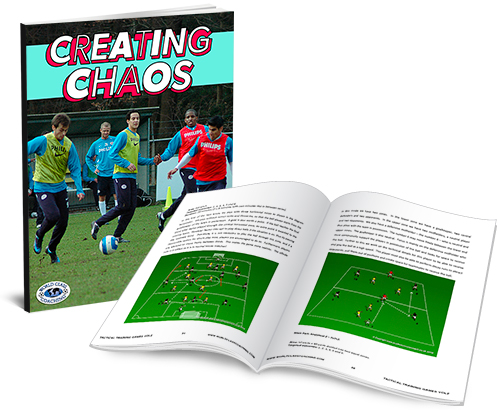
Table of Contents
PART THREE
Chaos to Build the Press/Break the Press/Transition
Chaos to Teach the Press/Beat the Press/Transition
The moment of transition is the single most chaotic moment in the game. Teams are forced to make a series of incredibly important calculations with all 10 field players being forced to move from an offensive to defensive posture, or vice versa. Teams having won the ball are forced to move from a compact defensive position to an offensive one with every player needing to move to an appropriate space, and all of this with the ball likely won in their own defensive third.
This chaos created by that movement means it is the point of time in which teams are most likely to press, trying to win the ball back within seconds. This is an incredibly effective tool if used properly. The majority of goals are scored in around 3-4 passes, which is obviously easier to complete if you are 30 yards from goal, rather than 100. To do this, though, the defensive team needs to be in incredible physical shape and retain players high up the field, leaving space behind that could be exploited for counter attacks. Therefore, training players to deal with, and even thrive, under the conditions of the transition moment can help them make better decisions at this vital moment in the game.
Transition to Attack
Description:
The purpose of the Transition to Attack drill is to recreate the pressure of defending in a team’s own final third and creating lighting quick counter attacks from this position using support play from the 9 and 10.
Setup:
The 10x54 yd field is split into three phases. 5 black players are placed as defenders representing the back line, the 6, and the 8. 4 yellow players are placed as attackers representing the 9s, 10, and 7/11. A red 10 is placed in the 2nd phase, and another red 9 is placed in phase 3. Balls are played in by the coach to attacking team at the edge of phase 1 and 2
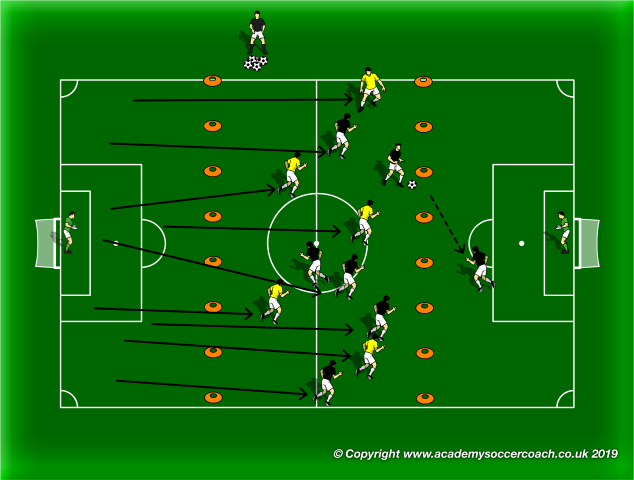
Execution:
Ball is initially played into the yellow team, who attempts to score goals against the black team. The black team then attempts to win the ball and play to the red player in phase 2.
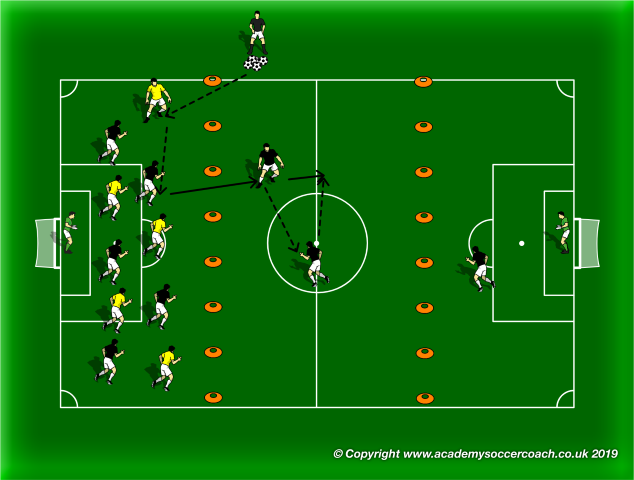
Once they have played a pass to the red player they can then move onto phase 3 where they must play a pass to the green 9. Regular out of bounds rules are applied, every restart after a goal comes from the coaches.
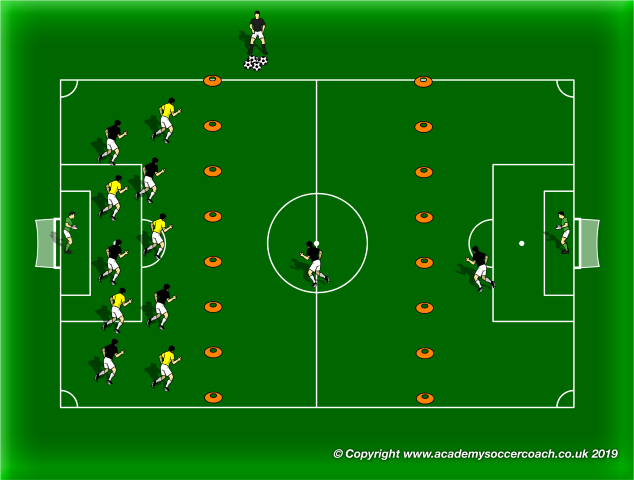
Variations:
Defenders can be added to oppose the red team
The middle line can be bypassed
No Elimination Knockout
Description:
No Elimination Knockout is a game that creates systemized chaos in which the structure of the game is constantly changing from an individual game into a team oriented one. The defensive side works mainly on pressing and denying space to their opponents
Setup:
A grid is created in which one team is on “offense.” Each player has a ball. The other team is the defending team.
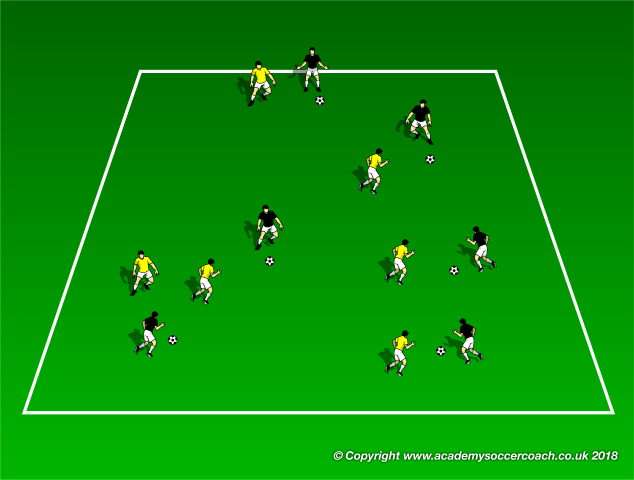
Execution:
The defending team attempts to knock the opponent's balls out of the grid. If a player's ball is knocked out of the grid they then become an outlet player for their team, until ultimately it becomes a game of keep away with one ball.

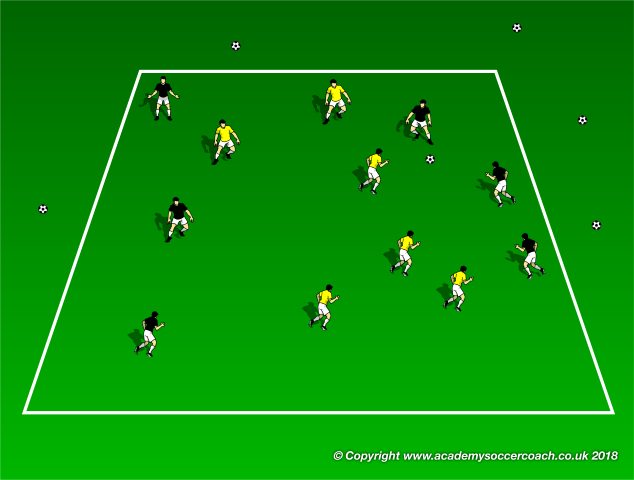
The session is timed. The team that can knock out all of the opponents balls in the fastest time wins.
Variations:
Grid size, number of players, how many balls are involved are all variables that can be altered
Transition Keep Away
Description:
The purpose of transition keep away is to simulate the pressure experienced under build up play, with the overall result of by retaining possession in a team’s own third they open up opportunities in the opponent’s final third.
Setup:
Two boxes 30x30 boxes with a goal at the end of one of the boxes. Two 8 player teams set up in the possession box, and 3 players from each team set up in the second box.
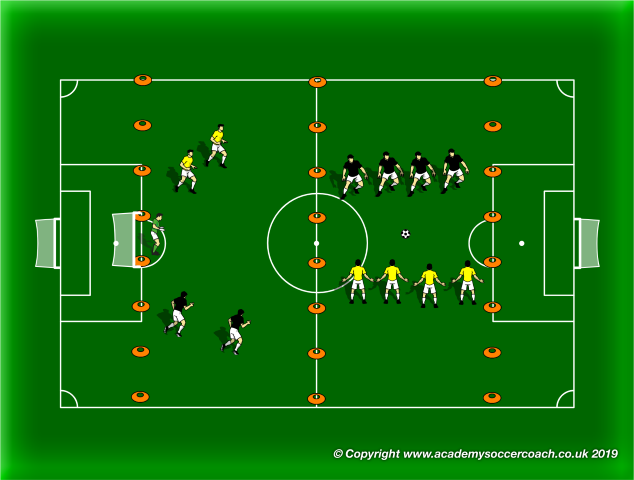
Execution:
In box 1 the possession team (black) attempts to connect on a set number of passes (10, 20, 30, etc.) within the grid. If they accomplish their goal they win and become the counter attack team, while the counter attack team becomes the possession team.
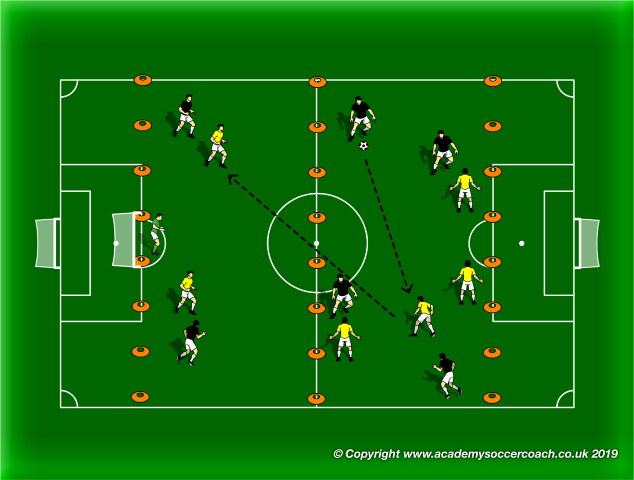
The defending team (yellow) must attempt to intercept a pass and attempt to counter into box 2, every player can enter the second box so rapid transition should give the yellow team numbers up in box 2 with a chance to score on net. The possession team attempts to win the ball back and bring in into box 1 to restart their count and attempt to achieve their goal.
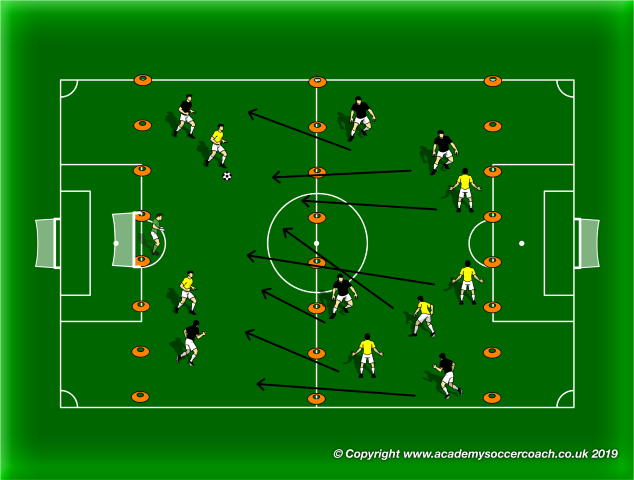
Variations:
Goals can be set up on either end, and instead of the game being reset in the possession box after a failed counter attempt, the counter box becomes the possession box and the possession team just possesses in the same box they were just defending


